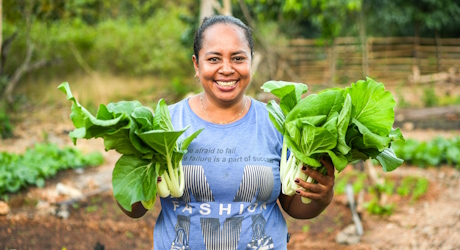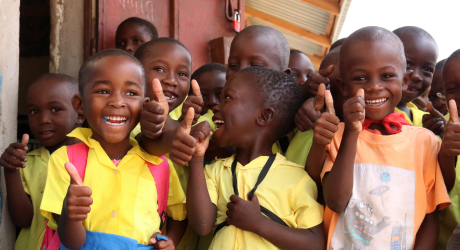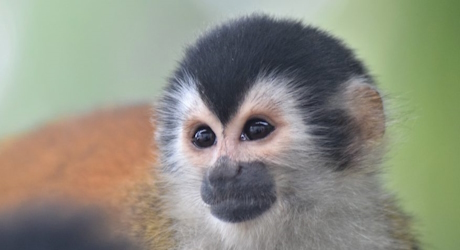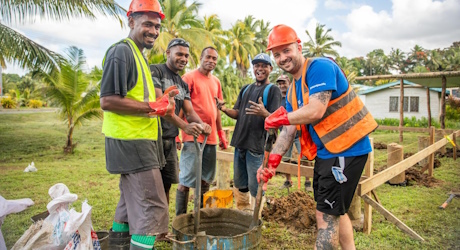Footprints Project
Since 2005, travelers like you have helped us change the world through micro-donations.
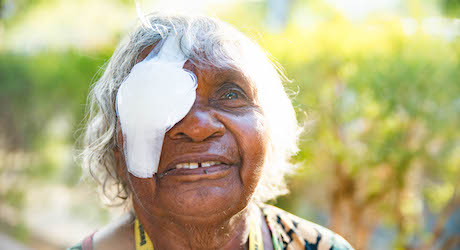
-
A total of
5701
Travelers
-
donated
$20001.53
(100% funded) -
to help improve
Health
-
impacting
200
people -
in
Australia
Project Background
The Fred Hollows Foundation has been working to improve Indigenous health for 21 years. Fred Hollows’ lifelong dedication to improving Indigenous eye health is at the heart of The Foundation’s work in Australia today.
By working with our local partners and their communities, we’re ensuring that Aboriginal and Torres Strait Islander people exercise their right to sight, good health, and self-determination.
Our work is making a real difference. In 1980, Indigenous Australians were 10 times more likely to be blind than other Australians. Since then, the gap has been significantly reduced.
Our challenge – and opportunity – is to close the gap completely That’s why we have launched an ambitious plan to scale up our work to see long-term improvement.
Key Project Activities
Your generous contributions are supporting the following activities:
- Tackle the cataract backlog. Cataracts are the leading cause of blindness for Aboriginal and Torres Strait Islander adults. Currently, eye surgery services are not meeting the needs of people living in regional and remote areas. Aboriginal people face longer wait times and other barriers to treatment. Your support is helping us provide urgently new services to clear the cataract backlog and improve wait times.
- Train doctors and eye health workers. There is a critical shortage of eye health workers in remote and regional Australia, and many doctors lack the knowledge, experience and skills to deliver culturally appropriate care. Your support is helping to strengthen cultural awareness training for eye health professionals and provide internships and clinical placements in rural and remote areas.
- Eliminate trachoma. Trachoma is a contagious infection that leads to permanent and irreversible blindness if left untreated. Australia is the only developed country where trachoma exists. With your help, we are working with local partners and remote communities to address the causes of trachoma and monitor and prevent it from re-occurring.
- Regional eye health infrastructure. To meet the eye health needs in regional and remote Australia, The Foundation is developing a network of ‘Regional Eye Hubs’ to deliver a mix of services and training for communities in need.
Key Project Outcomes
With your support, The Fred Hollows Foundation Is making a strong contribution to eye health services for Aboriginal and Torres Strait Islander people.
Last year, you helped us achieve the following results:
- 6,300 people screened, including 500 children
- 1,002 eye surgeries and treatments for cataract, trachoma and diabetic retinopathy
- 4 ophthalmologists trained to provide culturally appropriate care and 36 mid-level eye care workers trained in clinical support.
- 300 people participating in community education sessions
Case study
When Evelyn Pultara began to lose her sight, she feared she would lose her livelihood and her ability to pass on her culture to future generations.
Evelyn Pultara is an artist from Wilora in Central Australia. Born around 1940, she raised her family of six before starting painting nearly 20 years ago.
Art is entwined with Evelyn’s expression of her culture. Aboriginal spirituality is totemic, meaning members of a clan or family inherit a natural object, plant or animal as their spiritual emblem. These totems define relationships with each other and creation.
Evelyn’s totem is the Bush Yam, which has been a source of food and water for her people, the Anmatyerre, for thousands of years. It’s her responsibility to pay homage to the Bush Yam through song, dance and ceremony, and Evelyn chooses painting as her expression.
A few years ago, Evelyn’s ability to paint became threatened by cataracts. Since her husband passed away, Evelyn has relied on her daughter for care. “My daughter Rachael looks after me, she helps me wash my clothes and clean my house.”
Neither Evelyn nor Rachael knew what was wrong, but the stress of an unknown condition was lifted after Rachael drove her mother for four hours to Alice Springs and she was diagnosed with cataract in both eyes.
Evelyn was able to get help, but there are many other Indigenous Australians who face barriers when it comes to seeking health advice.
There’s a lot of cultural diversity in Aboriginal and Torres Strait Islander communities, and it’s a unique and challenging aspect of health delivery in this country. In the Central Australia and Barkly region, 15,000 Aboriginal people, including Evelyn, live in 301 communities. Among these communities at least 11 different languages are spoken.
Dr Tim Henderson is the only resident ophthalmologist in the Central Australia and Barkly region, and he services a population of more than 50,000 people who are dispersed across an area larger than Spain. He knows that language barriers and a lack of awareness from health professionals have contributed to hospitals being alienating places for many Aboriginal people.
Over the past decade, the Central Australia and Barkly Integrated Eye Health Strategy has taken steps to address these barriers through the delivery of culturally appropriate health care. A large part of this is including Indigenous Australians in the health system.
In other parts of the world, we hold massive eye camps, but we’re also restoring sight in large numbers right here in Australia. Evelyn was one of 30 patients to receive sight-restoring cataract surgery during an Intensive Eye Surgery Week at Alice Springs Hospital, led by Dr Henderson. He performed surgery on 776 people during Intensive Eye Surgery Weeks over the past 10 years. 582 of these surgeries were cataract surgeries.
With Evelyn’s sight restored in a matter of hours, she and Rachael and Evelyn started the four-hour journey back home. On the way, they stopped at a local art gallery where some of Evelyn’s paintings are sold. It meant so much to Evelyn to see her work clearly again. The symbolism of her work came through when she described how the bright blues represent the pools of water that mean the Bush Yams will soon grow.
Rachael is overjoyed for her mother and comforted in the knowledge that she will now be able to continue to paint the stories of the Bush Yam. With Evelyn’s sight restored, this special and spiritual part of her culture and tradition will live on. "I'm looking forward to cooking and cleaning and also making damper and going hunting for goanna and bush tucker. I'll be able to track the goanna again!"
What's next?
The Fred Hollows Foundation has launched its most ambitious plan yet, aimed at making a real and lasting impact on closing the gap.
Over the next five years, we will be making our biggest-ever investment in Aboriginal and Torres Strait Islander eye health. Our five-year action plan sets our priorities to end avoidable blindness.
Our work will focus on tackling significant eye health issues by delivering surgeries, screenings and medical treatment, training the eye health workforce, coordinating and improving outreach medical services and working towards eliminating trachoma.
These are the areas of our work that will make the biggest possible impact on eye health.
Interested donors should contact The Fred Hollows Foundation. For more information, please go to www.hollows.org
Traveling soon? When you buy travel insurance with us, you can make a contribution towards a cause you care about.
Get a quote